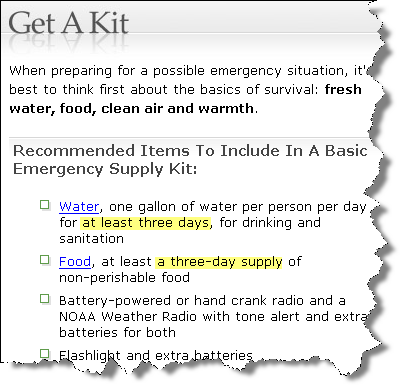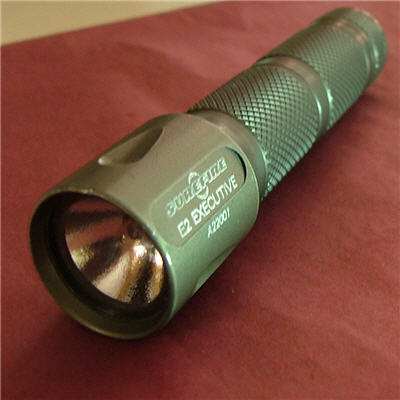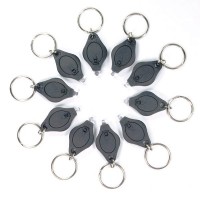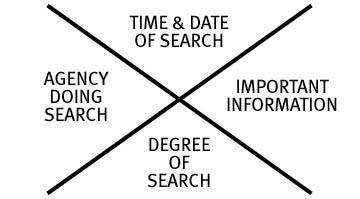Do you consistently carry a flashlight on or about your person? If not, why not?
Like most people, I hadn’t given much thought to being prepared for unexpected situations until 9/11. At the time I was still working in an office building (albeit only a 5-story one), but I started giving some thought to what I’d do if I had to evacuate from a damaged building. One of the first things to occur to me was that it’d probably be dark, since the power would probably be out and most stairwells are on the inside of the building. So I made it a priority to keep a flashlight on my person.
Since late 2001, I haven’t gone anywhere without my trusty old SureFire E2E Executive in my pocket:
Back when I bought it the HA E2E cost around $85.00 (current price is $96.00), and people looked at me like I was nuts for buying such an expensive light. Some even thought I was nuts for just having a flashlight at all. But regardless of a little wear-and-tear (which you can see in the picture), this thing is still going strong after six years despite having been dropped on concrete, dunked in water, soaked in (acid) rain storms, banged into doorways, and stepped on a few times.
And aside from being prepared for something big, you don’t realize how many times on a day-to-day basis you can use a flashlight until you’ve got one. I’ve used it to open locks in the dark, when walking the dog, and when crawling around under desks fiddling with computer wires. Also, a light as bright as the SureFire can be used for defensive purposes. If someone approaches you unexpectedly at night, the light can momentarily disorient the other person. I suspect that in at least one case, flashing the light at someone skulking near my truck in a dark parking lot discouraged him from staying and hassling me.
LED technology has advanced enough in recent years that there are some stunningly bright LED lights available at very decent prices. I’ve got a $22 CREE-based LED light that is twice as bright as the SureFire. Although to be perfectly fair, I wouldn’t expect the cheaper LED light to survive half of what my SureFire has been through (there’s more to a light than its brightness). The other advantage to LEDs is that they give more light, run longer, and generate less heat (I’ve burned myself with the E2E because it gets mega hot after 10-15 minutes). This has all got me contemplating an upgrade. If I retire the E2E, it’ll probably be for another SureFire, perhaps the L4 LumaMax. It is similar in size to the E2E, is available in Hard Anodized finish, has a pocket clip, and uses the same batteries (123A’s). But the LED lamp gives 100 lumens for 2.5 hours compared to 60 lumens for 1.25 hours with the E2E.
But regardless of my choice of light, you don’t have to spend a ton of money to be prepared. Just having a light on your key chain or in your pocket is half the battle. I even keep a few of these little key chain lights around to hand out to the “unenlightened.”  I get them in packs of 10 for $4.68 (shipped) and they’re surprisingly bright (enough to light up a small room or to navigate down stairs). I also keep some hooked to the zipper pulls of backpacks and bags to make it easier to find things in them in the dark (and just generally to have them around).
I get them in packs of 10 for $4.68 (shipped) and they’re surprisingly bright (enough to light up a small room or to navigate down stairs). I also keep some hooked to the zipper pulls of backpacks and bags to make it easier to find things in them in the dark (and just generally to have them around).
Anyhow, I’m putting all this out there for your consideration. If you already carry a light, you’re probably nodding violently in agreement to this post. If you don’t, then what are you waiting for?

 September 15, 2008
|
Posted by Aubrey Turner
September 15, 2008
|
Posted by Aubrey Turner
 Categories:
Categories: 

